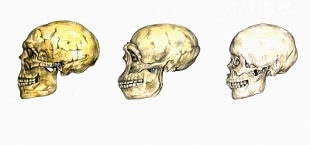- Homo sapiens, the survivor
- New theory: the Neanderthals exterminated by the diseases brought by the Sapiens
- Sofia, an exhibition in Agrigento for the "girl" of six thousand years ago
Share
11 May 2020The oldest remains of Homo sapiens in Europe are more than 45,000 years old, and are therefore 2,000 years older than previously thought, which also describes the interactions of modern man with Neanderthal cousins.Published in the journals Nature Ecology & Evolution and Nature, the result is due to an international group coordinated by the German Max Planck Institute for evolutionary anthropology and of which Italy is part of the University of Bologna.
The remains were discovered in Bulgaria, in the Bacho Kiro cave, and consist of a tooth and five bone fragments that the DNA analysis attributed to Homo sapiens. They have been analyzed in the two researches coordinated by Helen Fewlass and Jean-Jacques Hublin, both of the German Max Planck Institute for evolutionary anthropology. The dating of the finds was coordinated by the Italian Sahra Talamo, from the University of Bologna.
"The radiocarbon analysis confirms that the fossils date back to the early phase of the Upper Paleolithic and therefore represent the oldest direct evidence of the presence of our species in Europe", notes Talamo.
The site, Hublin noted, "documents a first wave of Homo sapiens, which came into contact with Neanderthal men and brought new behaviors to Europe." The confirmation of the presence of Homo sapiens in Europe already before 45,000 years ago allows to extend by 2,000 years the period of coexistence between our species and the Neanderthal Man, who disappeared about 40,000 years ago. A prolonged coexistence that inevitably influenced the paths of the two species, as shown by some clues always found in the Bacho Kiro cave.

